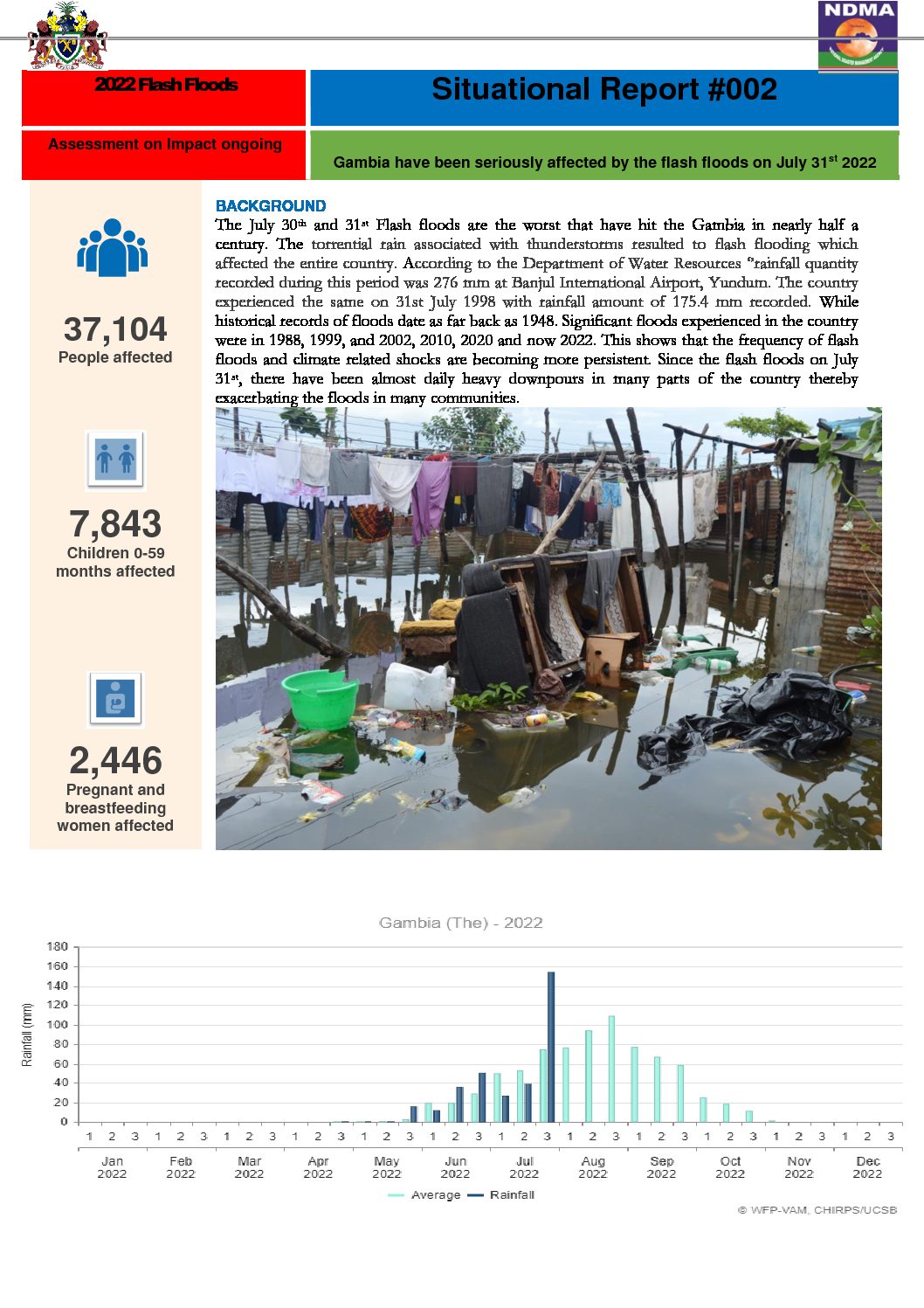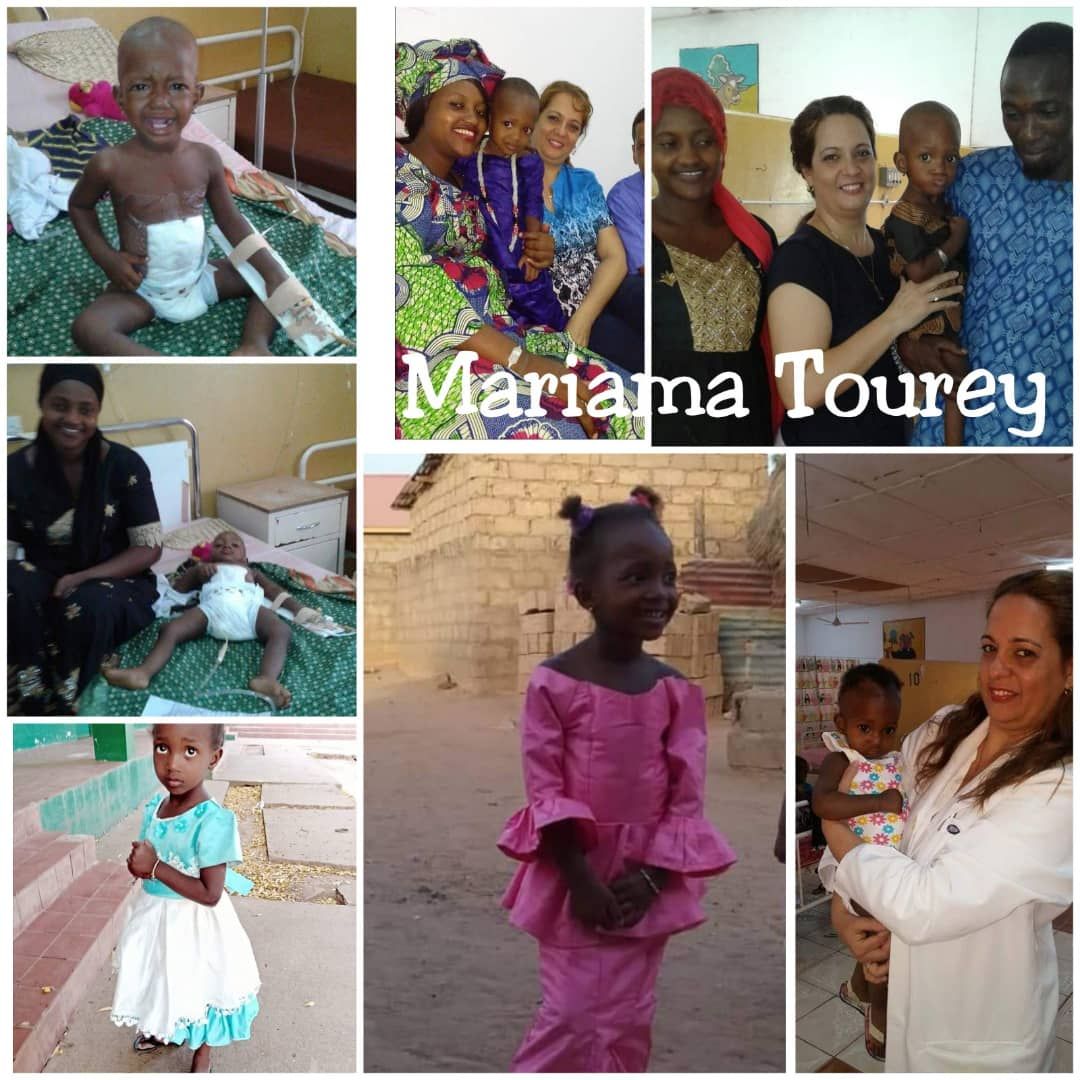National Disaster Management Agency (NDMA) has disclosed that there have been numerous incidents of diarrhea and skin rashes reported in Tobacco Road over the past few days, saying that the relevant authorities have been alerted.
In situational report number 002, the NDMA stated that there is a very high risk of water-borne diseases emanating from the flash floods and the slowly receding waters.
“In the Internally Displaced person camp, several pregnant women, and children under 5 are currently housed. These vulnerable groups need special attention and care as part of reproduction and child health but also need food and nutrition,” the agency noted.
Water, Hygiene, and Sanitation – National Disaster Management Agency, further disclosed that 298 water points and 981 sanitation facilities have been affected.
“This is particularly of huge concern in the Greater Banjul Area especially Tobacco Road in Banjul, Ebo-Town, Kotu-Manjai, and Nemakunku. In these and many more communities water is not receding at all or doing so at a very slow pace.
In Tobacco Road, the sewage system has overflooded and mixed with the flood waters. The water in Banjul is yellowish green with a pungent smell. Children and other people are seen playing in these waters or working through to access shops and markets. These floods and stagnant waters have also attracted reptiles in some communities posing a risk to the population,” the NDMA pointed out.
According to the report, the sequel to the affected areas and the impact of the flash floods estimated that hundreds of thousands of people in The Gambia are negatively impacted.
The report noted that a GIS specialist will be mapping the affected area and the impact on the population.
The ongoing registration, as per NDMA, has identified 37,100 people who are directly affected by the recent heavy downpours, adding the suburbs in urban settlements have been the hardest hit by the recent floods and 11 deaths have been reported because of the recent flash floods.
“Children under 5 account for 22% of the affected population while females account for 51% of the total affected population. 2446 pregnant and breastfeeding women have been recorded thus far. 1756 persons with disabilities have been affected,” the NDMA disclosed.
The Agency also reported that a total of 6,242 people has been internally displaced across the affected communities, adding that 52.4% of the IDPs are females who will need support on protection and related issues.
It noted that “the NDMA and Red Cross have established a temporal IDP camp in Banjul which is housing about 350 people mostly women and children. The Camp is located at St Augustine`s Senior Secondary School. The majority of the IDPs are living with relatives. Hundreds of houses have been completely or partially damaged and unsafe for human habitation,” the report disclosed.
On the environment, according to the report, in many of the affected communities, it is realized that sewage systems and waters have been blocked as a result of waste disposal in those gutters.
“Furthermore, many houses have been built in waterways thereby affecting its floor. Unfortunately, during such heavy rains, many households dispose of their waste in running waters thereby causing blockage of canals. Many of the affected communities are along swampy areas or waterways,” the report noted
However, while schools are currently closed for the summer break, there have been numerous reports of loss of personal school items including uniforms and stationery, revealing that Kuli Kunda and Sasita Toranka Arabic schools have been reported damaged.
NDMA’s detailed assessment of agriculture will discuss the impact of the floods on agriculture and food production.
However, there have been reports of farmlands being inundated and the loss of tens of livestock in the Central River Region, the report said.
On food and nutrition security, the recent flash floods have exacerbated the already dire situation of food and nutrition insecurity facing a greater population in the Gambia.
“The food and nutrition insecurity as a result of the flash floods compounds the existing challenges caused by the Russia -Ukraine Crisis, poor harvest, the 2021 devastating windstorms, Covid -19, high food prices, increase in fuel and transportation cost, etc. Women, Children, and the elderly are at a greater risk of food and nutrition insecurity with potentially devastating consequences,” the report pointed out.
The situational report noted that the torrential rain associated with thunderstorms resulted to flash flooding which affected the entire country.
The Department of Water Resources, as indicated by the NDMA, stated that the rainfall quantity recorded during this period was 276 mm at Banjul International Airport, Yundum.
“The country experienced the same on 31st July 1998 with rainfall amount of 175.4 mm recorded. While historical records of floods date as far back as 1948. Significant floods experienced in the country were in 1988, 1999, and 2002, 2010, 2020 and now 2022.
This shows that the frequency of flash floods and climate-related shocks is becoming more persistent. Since the flash floods on July 31st, there have been almost daily heavy downpours in many parts of the country thereby exacerbating the floods in many communities,” the Department of Water Resources recalled.




